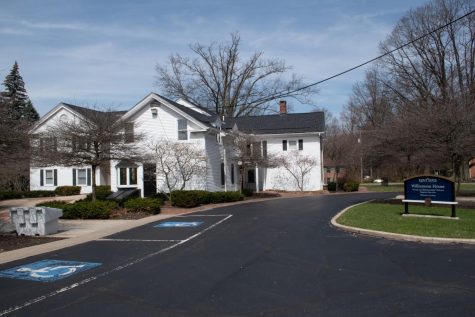Police blamed in Egypt revolt deaths
March 13, 2013
CAIRO (AP) — The highest-level inquiry into the deaths of nearly 900 protesters in Egypt’s uprising has concluded that police were behind nearly all the killings and used snipers on rooftops overlooking Cairo’s Tahrir Square to shoot into the huge crowds.
The report, parts of which were obtained by The Associated Press, is the most authoritative and sweeping account of the killings and determines that the deadly force used could only have been authorized by Hosni Mubarak’s security chief, with the ousted president’s full knowledge.
The report of the fact-finding commission, created by Islamist President Mohammed Morsi, could weigh heavily in the upcoming retrial of Mubarak, as well as his security chief, former Interior Minister Habib el-Adly, and six top police commanders. It is likely also to fuel calls for reforming the powerful security forces and lead to prosecutions of members of the police force.
The findings were leaked at a sensitive time for the country’s police. Still hated by most Egyptians, the force is in upheaval, with segments of police on strike and its chief, Interior Minister Mohamed Ibrahim, pleading not to drag it into politics. The force is also facing a challenge from Islamist groups threatening to set up “popular committees” to fill what they call a security vacuum created by the police strike.
Part of the force also is protesting what some officers see as an attempt by Morsi’s Muslim Brotherhood to control the force. The Brotherhood denies the charge.
The Interior Ministry, which controls the police, has repeatedly rejected charges that it bore responsibility for the killings in Cairo and other cities during the 18-day uprising that began on Jan. 25, 2011, and ended with Mubarak stepping down. In contrast, the pro-democracy activists behind the uprising have long maintained that police were to blame.
Mubarak and el-Adly, the second most powerful figure after the ousted leader, were convicted and sentenced to life in jail in June 2012 for failing to stop the killings, but the two have successfully appealed their convictions. The six top police commanders put on trial with Mubarak and el-Adly — including the head of security in Cairo and the commander of the riot police — were acquitted of charges related to the killings. The prosecution appealed that verdict and a new trial of the eight will start next month.
The report was submitted to Morsi and the nation’s top prosecutor late last year. Morsi, Egypt’s first freely elected president, has repeatedly vowed to seek retribution for the victims of the revolution and has ordered pensions and monetary compensation for families of the dead and wounded.
He has also decreed the creation of a special prosecution office to investigate and refer to trials criminal cases related to the uprising.
One of the report’s authors, lawyer and rights activist Mohsen Bahnasy, said he planned to submit relevant parts of the report to the prosecution in the Mubarak case as well as to other courts trying policemen charged with killing protesters. In the past two years, trials of policemen over protester killings have almost all ended with acquittals.
It is up to the top prosecutor to officially request that the report be included in the new Mubarak trial, according to human rights lawyer Gamal Eid.
Police brutality during Mubarak’s 29 years in office was a key cause of the uprising, but the army generals who took over for him, and Morsi, who followed them, have so far failed to reform the force.
The 16-member fact-finding panel included rights activists, lawyers, judges and a representative from the military prosecutor’s office. It conducted about 400 interviews with police and witnesses.
The report went into extensive detail, citing police logs of the issuing of assault rifles and rounds of ammunition and listing the officers who received them. It also cited logs on the rounds returned to storerooms, showing that a large amount was used, according to one member of the commission. He spoke on condition of anonymity because he was not authorized to reveal that part of the report.
“The use of firearms can only be authorized by the interior minister who must in turn inform the political leadership (Mubarak),” said the report. “And if the police continue to use firearms for more than one day, then the political leadership must be informed.”
The report cites witnesses as saying police snipers were positioned on the roofs of a hotel and the American University in Cairo, overlooking Tahrir and the Interior Ministry nearby, firing down on crowds of protesters.
Police officials told the commission that snipers’ equipment of the kind used during the uprising could only be found with members of an elite counterterrorism unit that worked under Mubarak’s pervasive state security agency and took orders directly from the interior minister.
Most the victims were shot in the head or chest, suggesting the use of snipers, and bystanders were also killed or wounded as they watched the clashes from their homes, the report said.
From interviews with witnesses and doctors, the report gave a detailed look on the extent of the turmoil, particularly on Jan. 28, 2011, the deadliest day of the uprising, when protesters battled police in and around Tahrir. By the end of the day, the police forces melted away from the streets, plunging the country into chaos and lawlessness.
One young Cairo protester just avoided being run over by a speeding police vehicle and then was shot 14 times. Another’s head was cracked open by gunfire as he carried a banner reading “peaceful” outside a mosque in Tahrir, the report reads.
Qasr el-Eini Hospital, the largest of several facilities near Tahrir, received 32 bodies on Jan. 28, a senior surgeon told the commission. Another doctor at the hospital said more than 100 wounded, most shot in the face and chest, were brought in immediately after he started his shift at 8 p.m. In the next 10 hours, the hospital dealt with a total of 200 cases.
The report also established that two of the six police generals who were Mubarak’s co-defendants — Cairo security chief Ismail el-Shaer and director of general security Adly Fayed — were positioned in or near Tahrir Square on that day. Investigators determined this by looking at police records of tracking devices carried by the generals for their own security.
The commission documented a total of 846 deaths during the 18 days — including 71 in the Mediterranean city of Alexandria, 13 in the province of Beni Suef south of Cairo and 19 in northern Sinai. In addition, the Interior Ministry told the commission that 26 policemen were killed in the uprising.
The 84-year-old Mubarak, according to the report, received at his palace a dedicated live TV feed from Tahrir arranged by Anas el-Fiqi, his information minister. He also authorized el-Adly during a meeting held four days before the start of the uprising to suspend the cellphone network and the Internet if needed. Mubarak later denied in court that he knew the extent of the protests and crackdown against them.
But el-Adly, who served Mubarak for more than a decade, told investigators in his prison cell that the former president was kept “fully abreast” of what was going on, starting with the uprising’s first fatal shootings by police in the coastal city of Suez on Jan. 25, 2011.
The court said it ruled to acquit the six police generals because it was not “comfortable” with the statements made by prosecution witnesses against them, that the policemen who did the actual shooting have not been identified and arrested, and that the prosecution did not present material evidence against them, such as voice or video recordings and the Interior Ministry’s weapons and ammunition logs.























